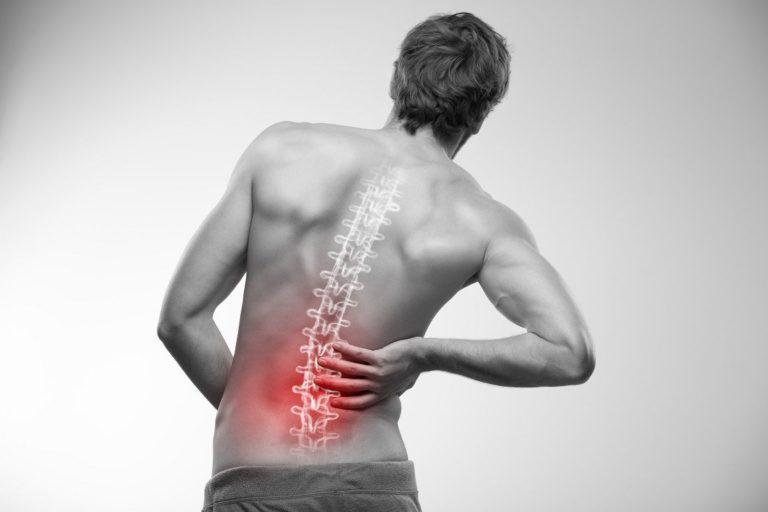
Although back pain is very common among peoples of all ages, it is more observed in mid-life. Women are more inclined to suffer from back pain than that of men. Approximately everyone at least once in lifetime gets back pain. Globally nearly 540 million people are affected by back pain at any one time.
Lower back pain can be categorized as Acute, Subacute or Chronic. Acute episodes of lower back pain usually last from a few days to 4 weeks and subacute lower back pain lasts between 4 to 12 weeks
The causes of lower back pain are sometimes viewed as being mechanical, organic or idiopathic. Sometimes spinal conditions are congenital (at birth) or acquired meaning the disorder develops later in life.
- Mechanical lower back pain is often triggered by spinal movement and involves spinal structures, such as the facet joints, intervertebral discs, vertebral bodies (vertebrae), ligaments, muscles or soft tissues.
- Organic lower back pain is attributed to disease, such as spinal cancer.
- Idiopathic refers to an unknown cause.
- Sprains and strains:- Ligament sprains and muscle or tendon strains are the most common causes of lower back pain.
- Degenerative disc disease:- While the name sounds worrisome, it just means you have a damaged disc causing pain.
- Herniated disc:- A disc that bulges or slips out of place is known as a herniated disc, bulging disc, or slipped disc. The herniation may press on nerve roots, leading to symptoms such as pain, tingling, numbness or weakness in the area that the nerve serves.
- Sciatica:- Pain that results from a pinched or irritated sciatic nerve. This nerve runs down your lower back through your hips and buttocks and down each leg.
- Spondylolisthesis:- A vertebra slides forward out of position, disrupting your spine’s alignment and sometimes compressing nerve roots.
- Spinal Stenosis:- A narrowing of the inside spaces of your spine, most often from a herniated disc but sometimes from bone spurs caused by spinal osteoarthritis.
- Arthritis:- There are more than 100 types of arthritis, many of which can cause lower back pain. The most common types include Osteoarthritis, Rheumatoid Arthritis, and Ankylosing Spondylitis.
- Cauda equina syndrome (CES):- Compression of the bundle of nerves that forms below the spinal cord in the lumbar spine. It is a rare but serious disorder that requires immediate medical attention and possibly emergency surgery.
- Discitis or osteomyelitis:- Both infections of discs (discitis) and bone (osteomyelitis) can cause severe pain and require prompt medical attention.
- Osteoporosis:- Your bones lose mass faster than it can be replaced, making them brittle. They can even fracture with little or no warning and cause pain.
- Spinal tumors:- When cells divide and multiply unchecked, the result is a tumor. Both benign and malignant tumors can cause lower back pain.
There are different Non-invasive treatment options for back pain depending on the severity and duration of symptoms.
They may comprise of one or many:
- Drugs & Medications
- Physical Therapy
- Spinal Bracing
- Spinal Injections
- Physiotherapy
Spine surgery is not necessary for most people who have lower back pain. If you do need it, your doctor will recommend an appropriate procedure to address your specific symptoms and medical situation.
Common spine surgeries include:
- Spinal Fusion:- Two or more vertebrae are permanently fused together to limit excess spinal motion. Your surgeon will use a combination of bone, bonelike material, screws, plates and rods to hold the vertebrae together so they can heal into a single unit.
- Laminectomy and Laminotomy:- Laminectomy is a surgery in which your surgeon removes the back portion of one or more vertebrae to create more space for the spinal cord or other nerves.
- Discectomy and Microdiscectomy:- When a herniated disc in the lower back is causing severe symptoms like pain or loss of sensation, your surgeon might operate to remove a portion of the damaged disc.
Most episodes of lower back pain eventually resolve on their own, but there are times when you should seek urgent medical attention.
Some of these situations include:
- Patient is a child
- Accident, injury, other trauma
- Fever or nausea
- Weakness, numbness and/or tingling sensations develop in the legs and/or feet
- Loss of bladder or bowel control
- Pain is severe, constant, suddenly or progressively worsens, and/or doesn’t go away
- Pain interrupts sleep







